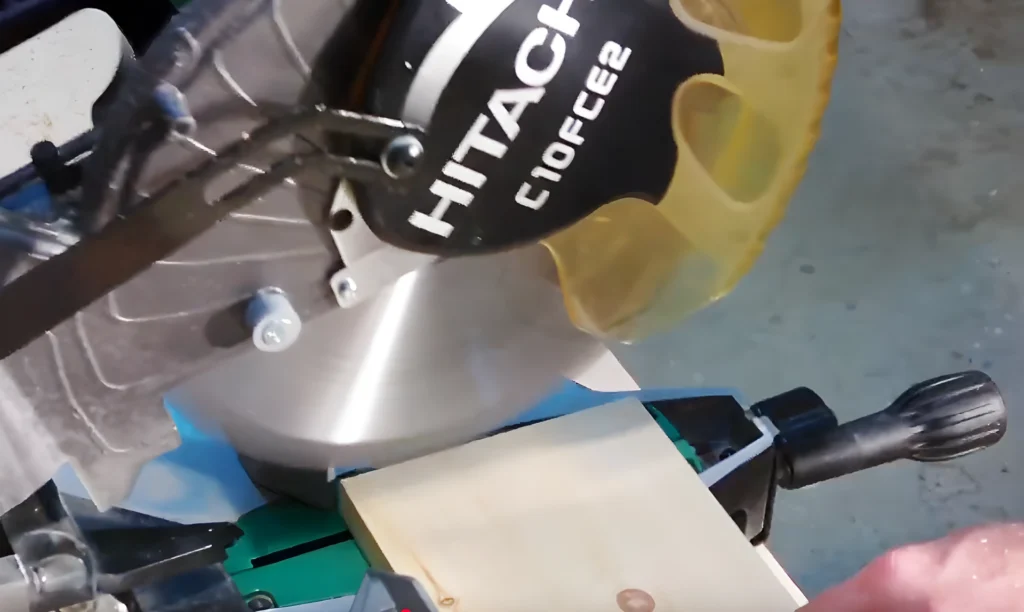The saw that lives on your bench
When I set up for a job — whether it’s a backwoods cabin with no electricity or a tidy urban reno — one of the first tools I reach for is my miter saw. It’s the kind of tool that becomes part of your rhythm: lift, pull, drop, repeat. If it fights you, your whole day drags. If it flows, you’re done before sundown.
I’ve had a Hitachi 10″ compound sliding miter saw riding in the back of my truck for over a decade. And for a few years now, I’ve also been working with a Makita dual-bevel 12″ — sleek, powerful, and surgically smooth. Both saws have their place, and both have earned my respect. But they’re very different animals.
Let me tell you what I’ve learned the long, dusty way.
What really matters when you’re cutting all day
If you’ve never stood outside in 28°C heat cutting fascia boards all afternoon, you might not realize how much a good miter saw saves your back and your patience. What matters to me isn’t the max cut depth or laser guides — it’s feel.
I want a saw that:
- Starts soft and doesn’t kick
- Slides clean without hesitation
- Has dead-on detents that actually hold
- Handles rough framing and fine trim equally well
Both Makita and Hitachi get parts of that right — but in very different ways.
I’ve always said the real test of a tool is how quietly you curse when using it. The less you talk, the better it is.
When you’re alone on-site, your saw is your teammate. It either slows you down or lets you move like water. I don’t want to fight with plastic levers or guess if the bevel lock actually caught. I want certainty in my hands.
Hitachi: Rugged, simple, always ready
My first Hitachi miter saw was a secondhand C10FSH. Heavy. Kinda ugly. But once I tuned it up, it became a workhorse. This thing has been rained on, dropped, loaded in the back of a van full of plywood — and it still cuts true.

The slide action is a little gritty compared to newer models, but reliable. The laser isn’t much use, to be honest — I’ve always trusted my eyes more. What really wins me over is the no-frills toughness.
You don’t baby a Hitachi. You just use it — and it takes whatever you throw at it.
At one job, we were building stairs for a steep outdoor trail, and the Hitachi made every angled cut feel like a straight line. No binding, no overthink. Just pull the trigger and move on.
Makita: Smooth, precise, engineered like a Japanese blade
Now, Makita — that’s a different story. The 12″ dual-bevel I’ve got feels like a piece of camera equipment. Every action is buttery. You tilt it, it stays. You swing the arm, it glides like it’s floating on air.
The detents are rock solid. You can dial in compound cuts to the decimal and not worry about creep. I use it when I’m doing finish work — stair trim, exposed beams, tight miters on cabinetry.

I remember trimming a traditional genkan entry in an old farmhouse near Niigata. Every cut had to be flawless, and the Makita helped me get there without sweating over every pass.
Makita rewards you when you’re exact. It’s a craftsman’s tool, not a jobsite bruiser.
If Hitachi is your boots-in-the-mud tool, Makita is your clean-hands chisel. Both good — just depends on the work.
What I felt in real use that specs won’t show
Here’s something no datasheet tells you: how the motor sounds at 6am when you’re half-awake. The Makita sings. The Hitachi growls. Neither is wrong, but you feel the difference.
Hitachi is faster to set up. The bevel lock is easier to slap into place without thinking. Makita is quieter and way less tiring over long hours. After six hours on trim work, your arms thank you.
Hitachi is forgiving. Makita is demanding. But that demand brings reward.
You don’t just use a Makita miter saw — you work with it. There’s a rhythm to it, and if you respect it, it gives back.
It’s like the difference between a shovel and a Japanese kanna plane. Both cut, but one invites finesse.
So which one stays on my truck?
If I could only take one saw to a jobsite with unknowns — rain, mud, power cuts — I’d grab the Hitachi without thinking. It’s survived more winters than some of my jackets.
But when I know I’ll be doing trim inside a client’s home, and they care about the details, I load up the Makita.
Honestly, I don’t think you can go wrong with either. Just ask yourself: do you want a tool that absorbs chaos or one that sings when everything is just right?
There’s more than one kind of perfect
I’ve learned not to expect one tool to do everything perfectly. Sometimes, you need rough. Sometimes, you need elegant. What matters is knowing which job you’re doing — and picking the saw that matches your rhythm.
A clean cut is more than just a line. It’s a sign of the mindset that made it.
I’ve cut wet fence boards in the snow and bevel-joined soft cedar in silence. And both saws were perfect — in their own way.
When you’re choosing tools, don’t just think about the specs. Think about how you work, what you value, and what kind of cuts you want to leave behind.

















